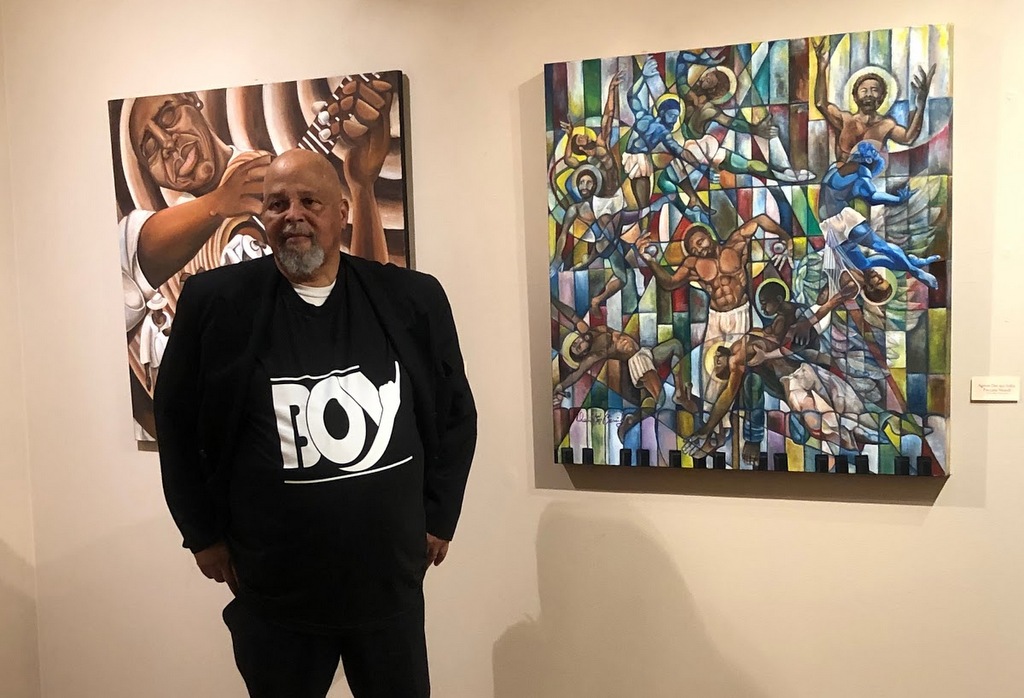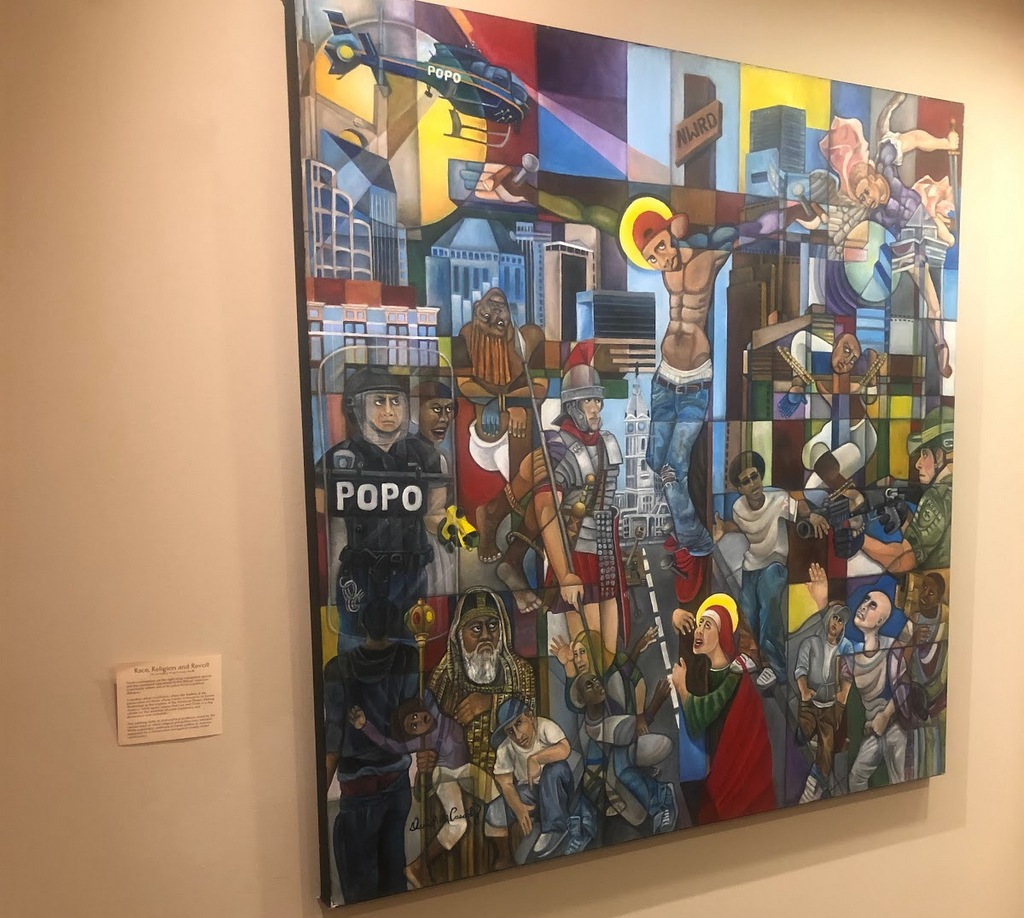[ad_1]
By Victoria Daniels
Special to the AFRO
Visual Artist David W.M. Cassidy’s exhibit, “Race, Religion & Revolt,” is dedicated to using art as a conversation starter for community and societal change.
“It’s a pictorial of the political and social conditions in the African-American community,” said Cassidy, the self-taught artist from California.
“Race, Religion & Revolt” is the newest installation at the Prince George’s African American Museum and Cultural Center and features two galleries of oil paintings with the cubist abstractionist style that is coined with Cassidy’s work.

Vivid colors create scenes of women in church pews, an homage to Black dancers and even the eyes of Black men watching God, yet the painting that inspired the exhibit title made all the visitors stop and attempt to dissect every inch of the canvas.
Cassidy explained that the painting, “Race, Religion & Revolt,” came to life after Michael Brown’s life was taken, the unarmed 18-year-old who was shot by a White officer in Ferguson, Missouri. After Brown was shot, riots and unrest broke out all over the city, which was met with officers in armored vehicles and body armor or what Cassidy describes as a “militaristic response from the government.”
He chose to include key elements in this piece, such as a crucifixion happening right outside the city hall, police helicopters and officers in armored gear labeled as the “PoPo” and mothers weeping at the feet of the cross, which to him, are all symbolic of historic religious events.

In his words, “Crucifixion is very symbolic of modern day lynching” and similar to people being shot and left for dead in the street. Yet, he isn’t the first to recognize the similarities of Jesus’ crucifixion, lynching and police brutality. He references theologian James H. Cone, who wrote “The Cross and the Lynching Tree” and found parallels between history from his religion and events that transpire in the present world.
Lisa A.L. Clark, chief operating officer for Black Art Today, the art entity that Cassidy belongs to, describes him as a griot who is telling the story of the African-American community.
“He’s taking that and putting it on canvas and he’s giving it layers,” said Clark. She compares what he is doing to the role of a journalist in that he is telling a story and explaining it “for people who don’t understand the words, [but] they understand the image.”
Thomas Dade, another artist with Black Art Today, believes that Cassidy is doing his part as an artist by telling society’s story. Dade has been so inspired by Cassidy and his work, that he’s gone back to using oil paints in his own pieces. The conversation that Cassidy is hoping ensues from his artwork, Dade sees as “a much-needed conversation and continued conversation, not just for Black History Month.”
Cassidy wants people to see his artwork and talk. He defines art as political and views it as a catalyst to the community coming together, listening to one another and having dialogue.
He also believes the community should adopt “faith in terms of liberation and restoration.” He sees the community using differences as opposition instead of celebrating the different perspectives and ideals.
As for his artistic process, he calls himself an emotional painter.
“Things hit me emotively and I take it to the canvas.” He doesn’t start with colors in mind, but instead with a blank, black canvas and sketching images in chalk. Next, he paints in the images, often only doing a square inch a night which can take up to two hours.
Following the canvas and his intuition, he tends to get “lost in the sauce” of details which means his paintings aren’t rushed. He once worked on a piece for a whole year.
This exhibit will be available until May and more information about Cassidy and his artwork can be found at www.blackarttoday.com or www.pgaammcc.org.
Cassidy encourages the community to view this art and remember that accepting differences and adopting love is a step in the right direction of liberation and restoration.
“If you don’t have love, you don’t have faith because you have nothing to make faith work.”
[ad_2]
Source link
Warning: Undefined variable $post in /var/www/wp-content/themes/newsup/inc/ansar/hooks/hook-index-main.php on line 117
